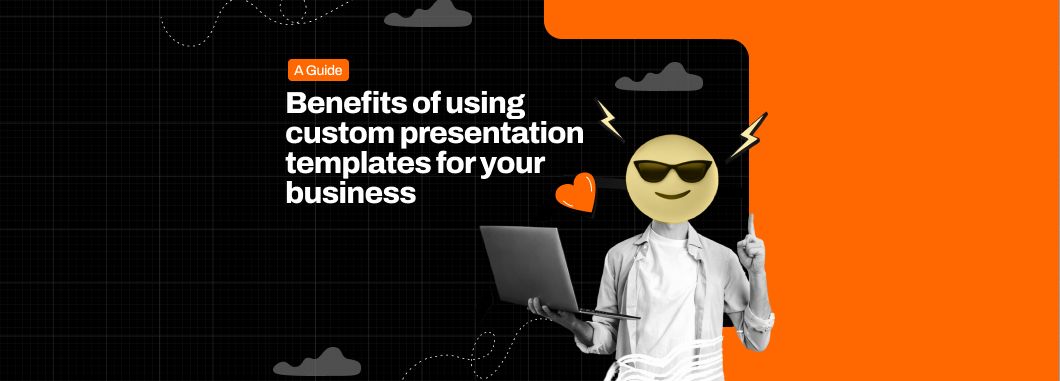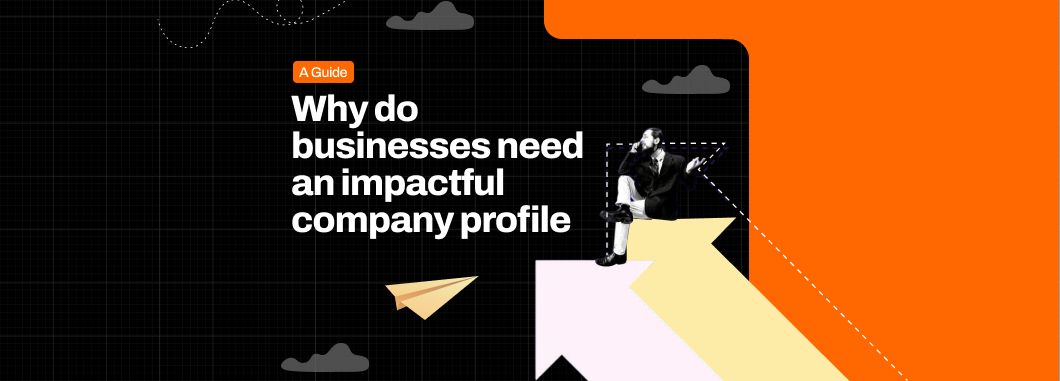Apple’s product launches showcase the devices, but the real deal is the fact that they engineer desire among people. In a world of overhyped product launches where all anyone does is gloat about the product features, Apple’s product presentations consistently stand out. It’s not just for what they present, but how they present. Each keynote is strategically created to build emotional connection, trust, and a sense of relevance among the audience. Whether it’s the first iPhone in 2007 or the Apple Vision Pro in 2023, the presentation is as much a product as the product itself.
7 things that you can learn from Apple’s product decks
Lesson 1: Start with a clear, audience-first narrative
Apple never starts with features. It starts with why it matters. Take the iPhone introduction in 2007: Steve Jobs opened by saying, “Today, Apple is going to reinvent the phone.” He framed the story not with specs, but with a promise that addressed real user frustration with clunky phones and clumsy interfaces.
Takeaway: Open your deck with the user problem or opportunity. Build a bridge between your audience’s pain and your product’s promise.
For more on aligning product narrative with strategy, explore our blog on How to create product presentations.
Lesson 2: Keep the slides minimal yet meaningful
Apple’s slides are famously simple. One headline. One striking visual. No bullet dumps. In the 2020 M1 chip presentation, Tim Cook unveiled a slide that just said: “Small chip. Giant leap.” One image, one message.
Takeaway: Use restraint. Design each slide to be instantly understood in 3 seconds or less. Let visuals speak. Keep text to a minimum.
This aligns with principles discussed in our Guide to designing a great presentation and Cognitive load in presentations, where simplicity improves recall and persuasion.
Lesson 3: Build tension before the reveal
Steve Jobs was a master of anticipation: “We have something really special today...” He often delayed the reveal to build excitement. When he launched the MacBook Air in 2008, he showed a Manila envelope. The audience waited. Then he pulled out the world’s thinnest laptop. Applause.
Takeaway: Don’t rush into your product demo. Tease the idea. Set the stage. Create a moment.
Lesson 4: Use a balance of emotion and logic
Apple presentations aren’t data-heavy. They’re experience-rich. When Tim Cook introduced the Apple Watch, he didn’t say, “Here’s a timepiece.” He said, “Apple Watch is the most personal device we’ve ever created.”
Takeaway: Sell the outcome, not just the offering. What does your product feel like? How does it change someone’s life?
This emotional layer is essential, especially in complex storytelling. Learn more in our blog on How to use storytelling in presentations.
Lesson 5: Make the demo a show instead of a tutorial
Every Apple demo is tightly rehearsed, be it the iPhone X face recognition demo, the AirPods seamless sync, or even Live Text scanning in iOS. They’re all perfectively delivered and have amazed the audience in one way or another. It all depends on how the demo or presentation is delivered.
Takeaway: Your product demo should create surprise and excitement. Avoid walking through every feature, and focus on one powerful use case.
Related read: How to deliver effective presentations
Lesson 6: Keep the visual language consistent
Apple’s decks look and feel like their brand- sleek, premium, whitespace-rich, readable. Typography like San Francisco and visual cues like gradients and device mockups tie it all together.
Takeaway: Your deck is part of your product experience. Use brand-consistent fonts, colors, and layouts. Avoid visual noise.
This principle drives our design approach too. For font inspiration, explore 15 best fonts for presentations.
Lesson 7: Close with a vision
Instead of a hard sell, Apple often ends with a broader vision. The iPhone wasn’t just a phone. The Vision Pro wasn’t just a headset. It was the beginning of a new era of phones, which brought a trending wave in the market.
Takeaway: End your presentation with a mission that audiences can buy into. Not just what they should do next, but where you’re going.
If you’re working on your final slide and need to know how to give your audience a clear call to action, give this blog a read- 7 powerful strategies to end a presentation.
Tim Cook vs. Steve Jobs- Two completely different styles yet a consistent impact
Steve Jobs: The Showman
- Strong storytelling; minimal guest speakers
- Emotional, dramatic reveals (e.g., iPhone, MacBook Air)
- Used humor, pauses, and theatrical pacing
- Focused on new category creation
Tim Cook: The Strategist
- Shares stage with executives and product leads
- Polished, calm, numbers-driven tone
- Builds trust with consistency, not drama
- Focused on ecosystem growth and reliability
Why both work?
Jobs was ideal for Apple’s era of disruption. His theatricality suited novelty. Cook’s method fits a mature Apple, focused on refinement and scale.
Takeaway: If you’re launching something new, channel Jobs. If you’re evolving something established, follow Cook.
For leaders and founders working on delivery, our blog on Mastering stage presence can help refine your on-stage effectiveness.
How apple syncs product and keynote presentations?
Apple doesn’t just make a basic product launch deck. It engineers a multi-channel narrative where the message flows seamlessly across every customer and stakeholder touchpoint. The keynote becomes the anchor, and everything else extends from it.
Here’s how Apple does it:
Product Pages: Immediately after the keynote, Apple’s website updates with immersive product pages. These pages often mirror the language and visuals from the slides so they don’t just stay on stage, but become taglines across the web.
Retail Displays: Walk into an Apple Store after a launch, and you’ll see the keynote visuals adapted into signage, demo stations, and interactive displays. The customer journey in-store echoes the promise first unveiled on stage.
PR Statements & Media Kits: Press releases borrow directly from keynote framing, ensuring journalists and analysts repeat Apple’s language. This avoids dilution and keeps Apple in control of the story.
Social Media and Ads: Clips from the keynote are repurposed into bite-sized campaigns. Apple doesn’t reinvent messaging for social, it amplifies the same narrative with cinematic polish, ensuring familiarity across platforms.
Investor Communications: Even quarterly earnings calls and shareholder decks reference the same positioning introduced during launches. Apple signals strategic alignment with product innovation, convincing investors that the vision shared on stage is also a business reality.
Most presentations exist in isolation- a pitch deck for investors here, a different sales pitch there, an unrelated explainer video somewhere else. Apple shows that true impact comes when your presentation narrative becomes the backbone of your communication ecosystem.
Want to Bring This Level of Impact to Your Own Deck?
Apple’s decks look effortless. But they’re a product of design strategy, storytelling rigor, and endless iteration. If you’re building your next pitch, Architect a narrative experience. If you’re not confident about doing it on your own, a presentation design agency is your best bet. We, at Crappy presentations offer presentation design services that help you with strategic storytelling as well as visual execution. Reach out to us- we’ll be happy to help!
If you’re still skeptical about considering a professional presentation design agency, our blog on How to choose the right presentation design agency might help you get the clarity you need.
For more insights, tips and tricks about all things presentations, Check out the crappy presentations blog.








